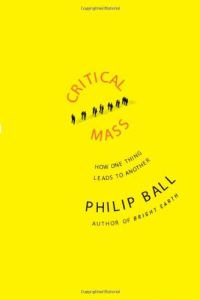Join getAbstract to access the summary!

Join getAbstract to access the summary!
Philip Ball
Critical Mass
How One Thing Leads to Another
FSG, 2004
What's inside?
Can physical science explain human behavior? Well, it gave us modern portfolio theory. Now apply it to traffic jams.
Recommendation
This is a sometimes dense, often rambling and always interesting book about the history of science, the history of social philosophy and many points of congruence between the two, from how traffic jams happen to how communities self-organize. Author Philip Ball seems to include almost every notable physical scientist since Sir Isaac Newton as he traces how key scientific theories have influenced or been influenced by the speculations of economists and political scientists. Anyone whose acquaintance with science is minimal, but whose curiosity is deep, will find that reading this book is something like floating down a river that is a sometimes windy, sometimes swampy, sometimes roiling stream of discoveries, ideas, broken hypotheses and curious characters. There are two small flaws. First, the author identifies almost every scientist who ever worked on a problem remotely related to the book’s subject and sometimes he does not clear the path through the thicket of names and experiments. And, second, in a social science discussion toward the end, Ball permits his political biases to color his story with occasional, apparently heartfelt, denunciations of right-leaning politicians. These quibbles aside, getAbstract.com says buy this book and enjoy an intriguing raft ride through interesting intellectual waters.
Summary
About the Author
Philip Ball majored in chemistry at the University of Oxford and received a Ph.D. in physics from the University of Bristol. He is now a writer and a consulting editor for Nature. His book, Bright Earth: Art and the Invention of Color, was nominated for a National Book Critics Circle Award.


















Comment on this summary